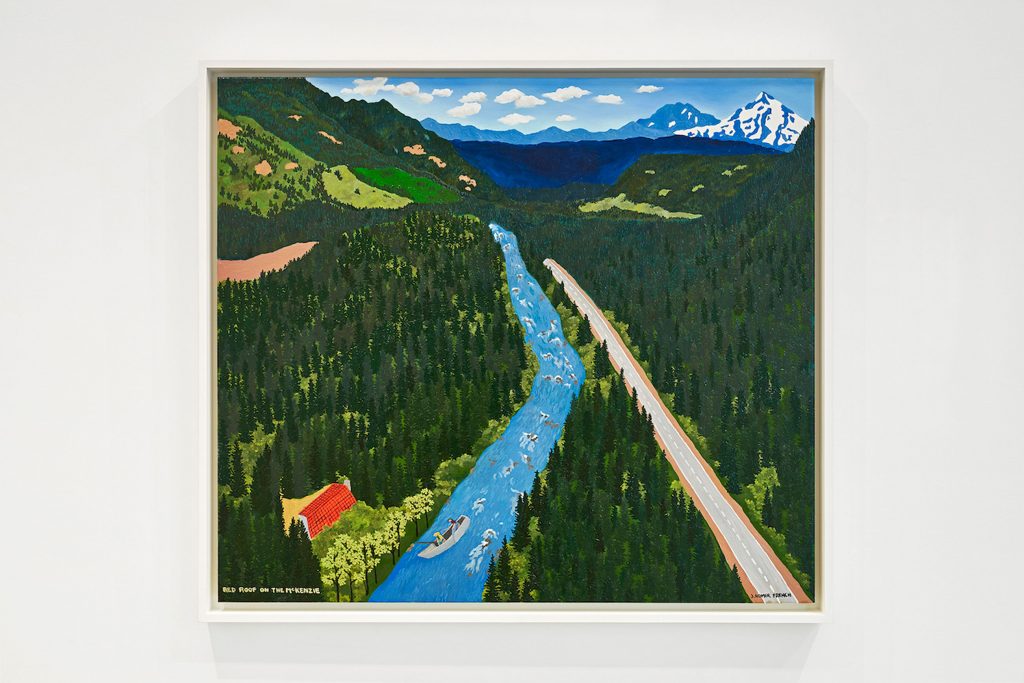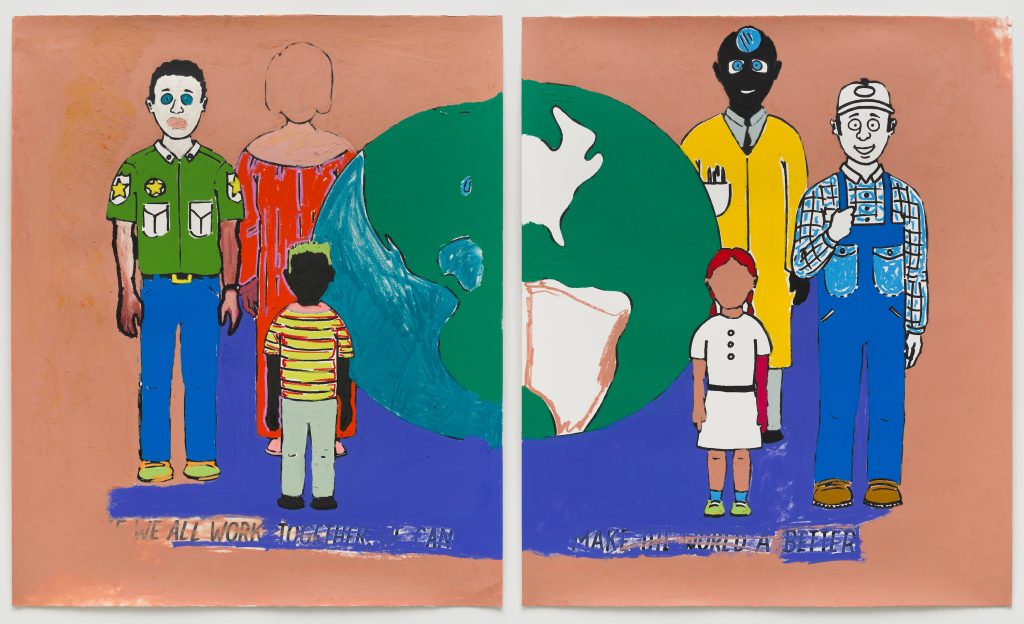Should a single Damien Hirst painting cost more than an entire Old Masters sale? Why does Adrian Ghenie’s auction record stand higher than Frida Kahlo’s? The strange, fickle, largely subjective nature of art valuation is one of the industry’s most enduring enigmas—and sources of complaint. To analyze what’s behind some of the confounding prices in the art market, in our series “This or That,” we ask experts to compare two very different works of art offered at comparable prices.
In an attempt to keep the OVR a relevant sales vehicle, Art Basel’s newest online sale is themed around works created exclusively in 2021. Because of that constraint, the list of exhibiting artists is mostly a roll call of emerging talents showing the wettest of paint. In other words, the markets for most of them haven’t been cooking long enough to establish a solid case to buy on investment considerations alone. So for this special edition of “This or That,” personal taste will have a determining hand.
We decided to hone in on two different kinds of emerging art star: Sable Elyse Smith and Jessie Homer French, both of whom have recently earned the ultimate art-world seal of approval by having their work included in the main exhibition of Cecilia Alemani’s 2022 Venice Biennale.
Smith’s work across photography, video, and sculpture investigates trauma, memory, and the carceral state. Born in 1986, the artist has been garnering institutional interest and is one of just two artists exhibiting both in the Whitney Biennial and in Venice this year. Naturally, interest in her market has followed: her interventions on found activity books, meant to educate children exposed to the justice system, sold out on the first day of Art Basel’s OVR through JTT gallery.
French, meanwhile, is a self-taught artist born in 1940 who didn’t begin exhibiting until 1978. Her oeuvre often focuses on the sublime beauty of nature in the landscapes of the Pacific Northwest and Southern California, where she lives, and humanity’s toxic interference with it. She is represented by Italian dealer Massimo de Carlo and has had solo exhibitions with taste-making galleries Various Small Fires and Mother’s Tankstation.
We spoke with art advisor Diana Abela, a director at Gurr Johns, about which work she would buy: a painting from Elyse Smith’s “coloring book” series, priced at $35,000 to $50,000 at JTT; or Homer French’s Red Roof on the McKenzie, priced at $25,000 to $50,000 at Massimo de Carlo. Here’s what she said.

Jessie Homer French, Red Roof on the McKenzie (2021). Photo by Thomas Lannes. Courtesy Massimo de Carlo.
This or That? This is a very hard decision for me because both artists are garnering interest in the marketplace, but I would pick the Sable Elyse Smith.
On aesthetic considerations: Smith’s work is very powerful, and the bold colors seem to intensify the impact of the subject matter she is dealing with. The coloring books that her works are based on are used in courtrooms and are employed by the artist to explore the dark side of prison life, something not often brought to the fore. Smith exposes the biases that children are exposed to in the American justice system by using the simplistic outlines of family groups. Her father was imprisoned for much of Smith’s life, and this autobiographical element [means] her aesthetic is charged with a desire to bring together activism, art, and writing. This is what resonates so meaningfully for me.
Jessie Homer French’s Red Roof on the Maker is a beautiful painting that reflects on human interaction with nature. The idyllic scene masks the fact that she is tackling the darker side of California, which is now regularly inflicted with wildfires. This is a topic that is particularly pertinent to our times and, following a long career, she is deservedly being recognized for her subtle, bucolic landscapes. But aesthetically, Smith’s work stays with me, invoking a sense of disquiet.
On market considerations: Good galleries create demand for artists and I think both artists benefit from that.
Smith’s work has been included in group shows at MoMA PS1 and the New Museum in New York, and that translates to increased market traction and attention. This is something that I feel will continue to develop this year, with her work being included in the Whitney Biennial and an upcoming group exhibition at the ICA Boston.
Figurative paintings that convey a strong and relevant narrative are what collectors are seeking at the moment. This desire to acquire works that underscore the contemporary political situations and ideological discourses of our times make Smith’s works particularly appealing. She creates compelling ruminations on injustice that combine powerful imagery with language. To me, this multidisciplinary approach is what will continue to drive interest in her work. A sense of discovering an artist at a seminal moment in their career also really chimes well in the market. I think she is on the brink of becoming more of an international name.
Art Basel OVR:2021 is on view through February 12.







